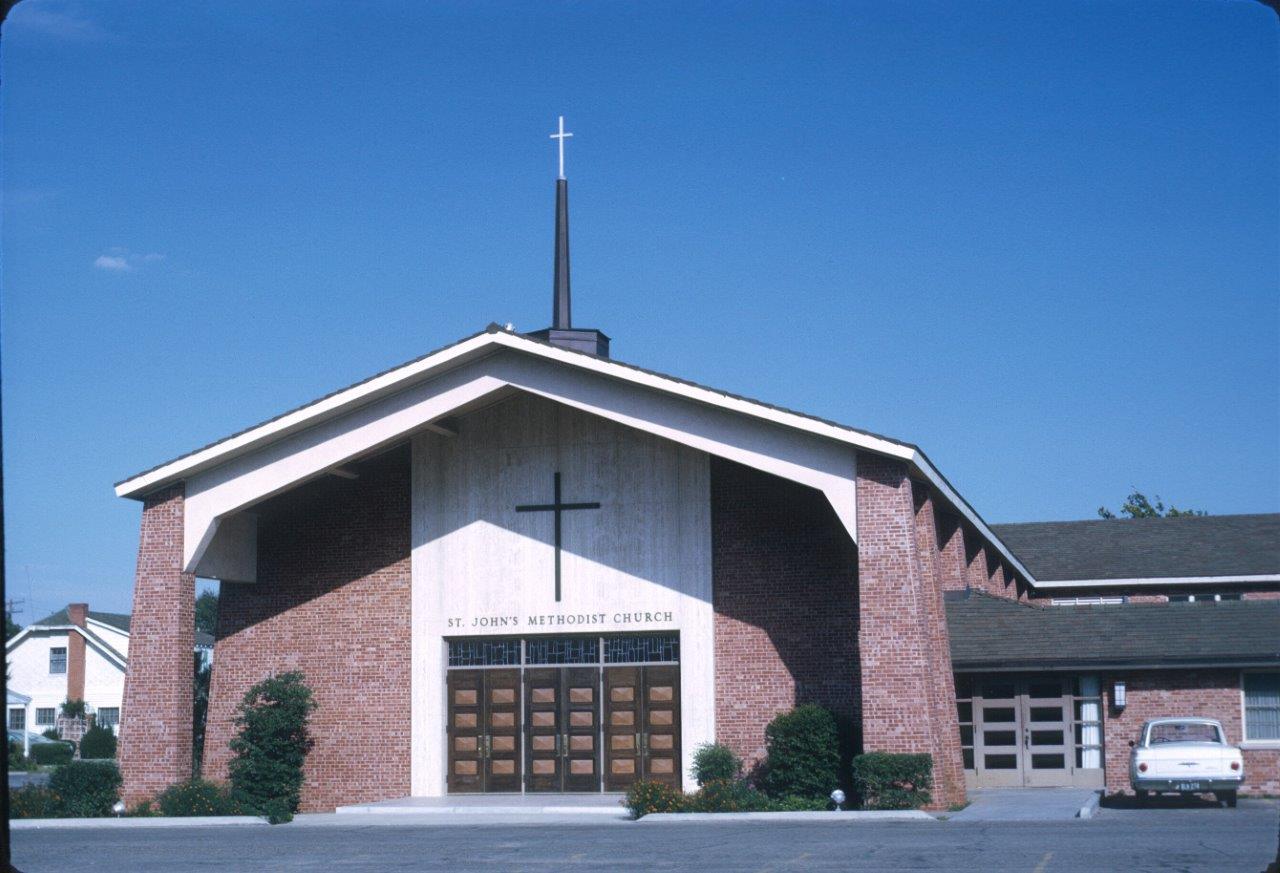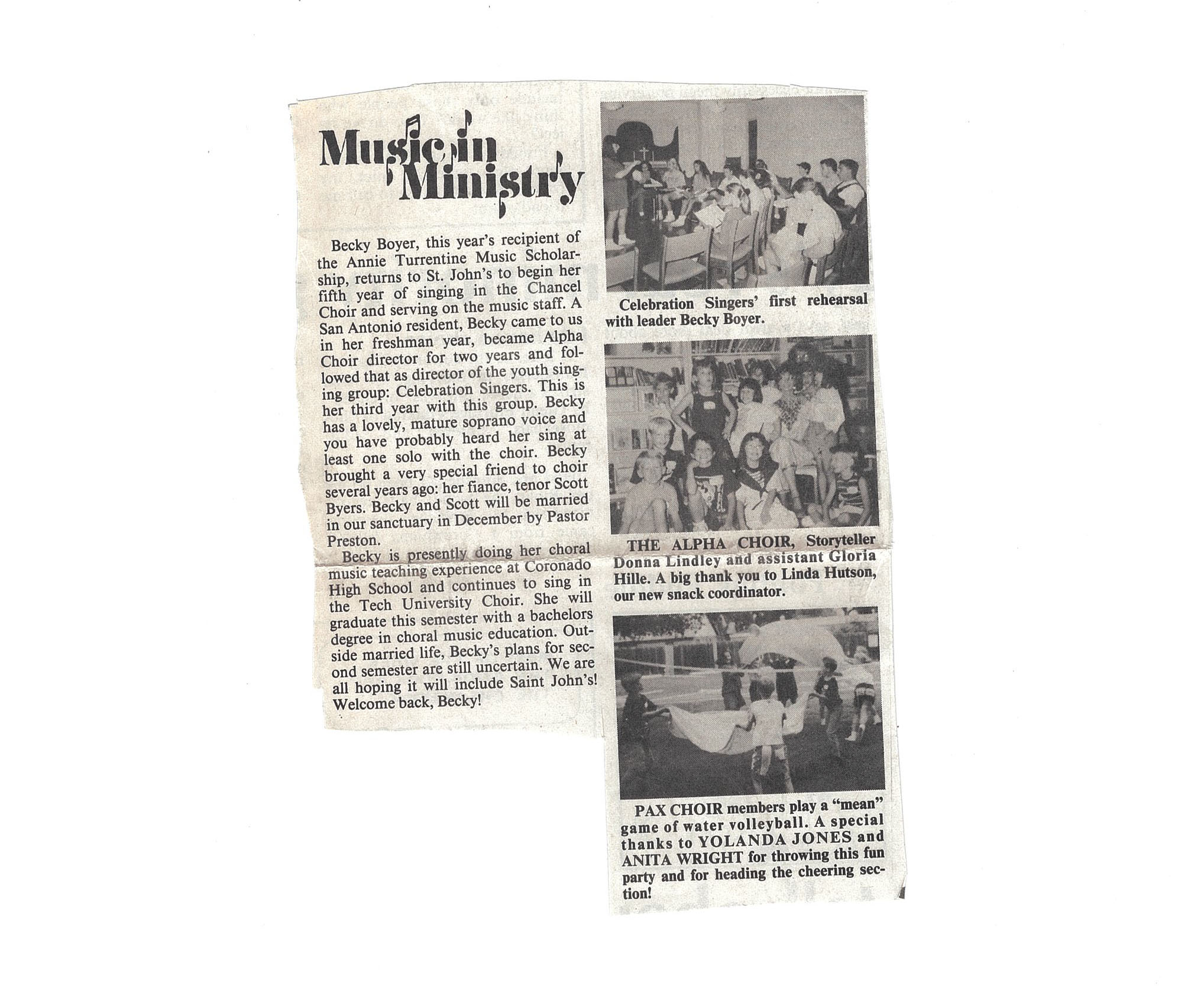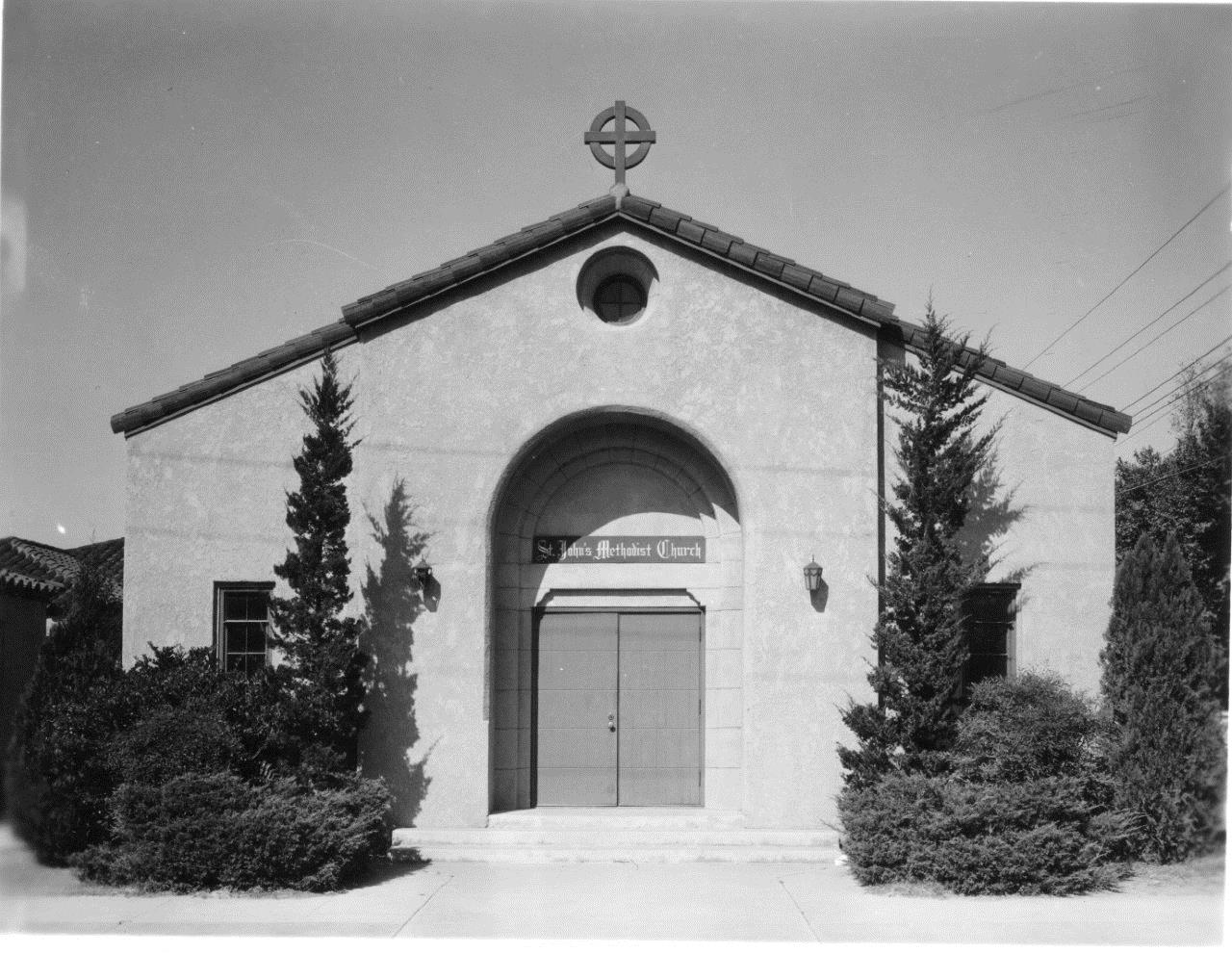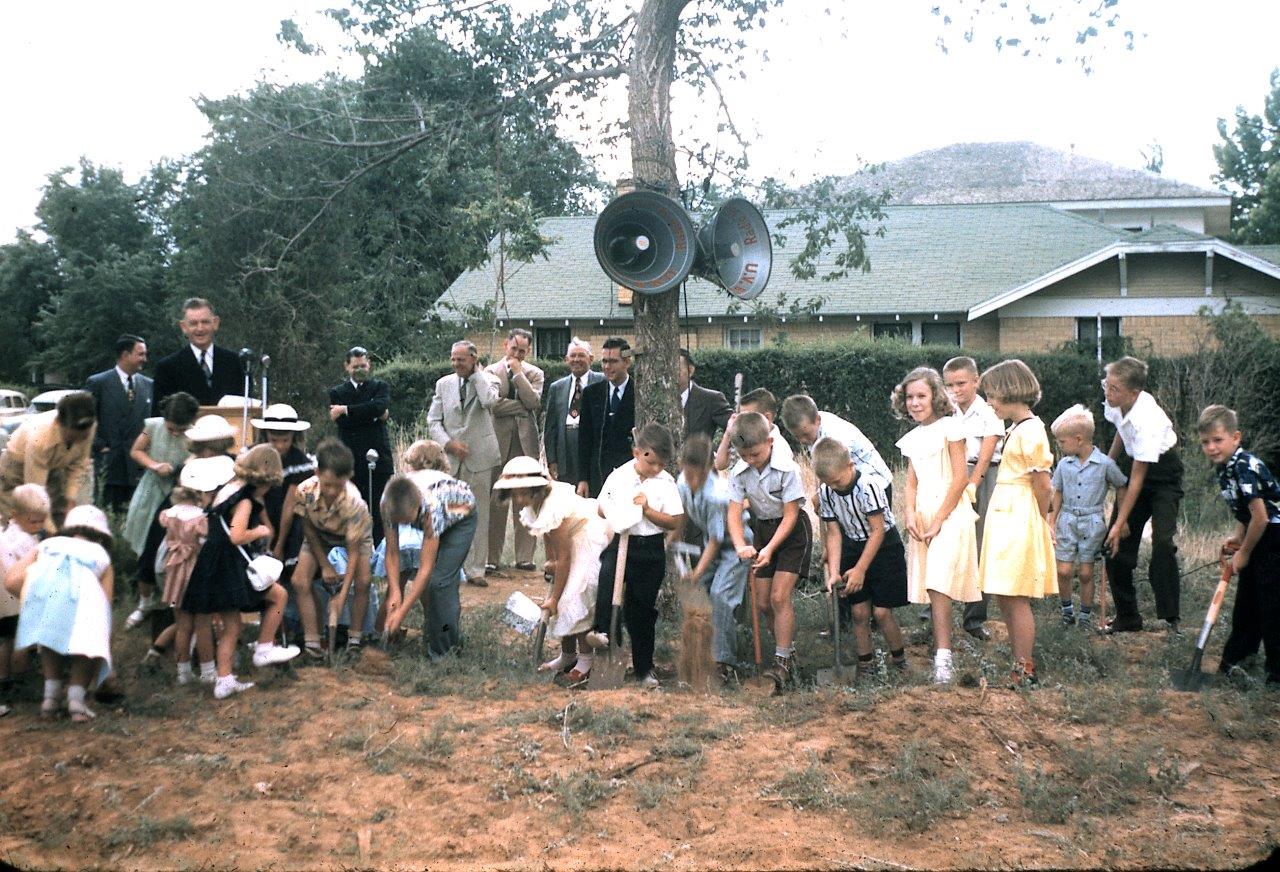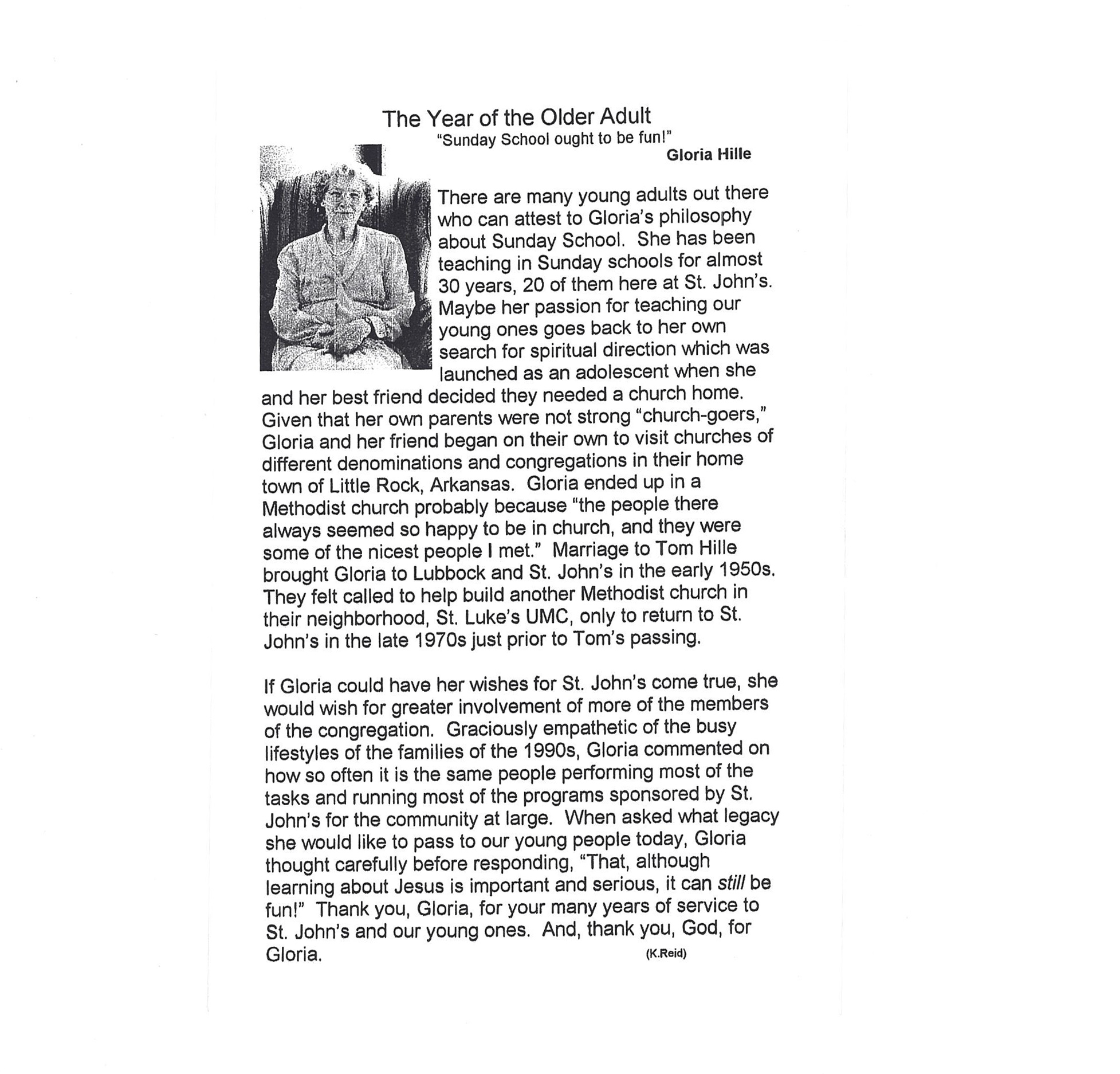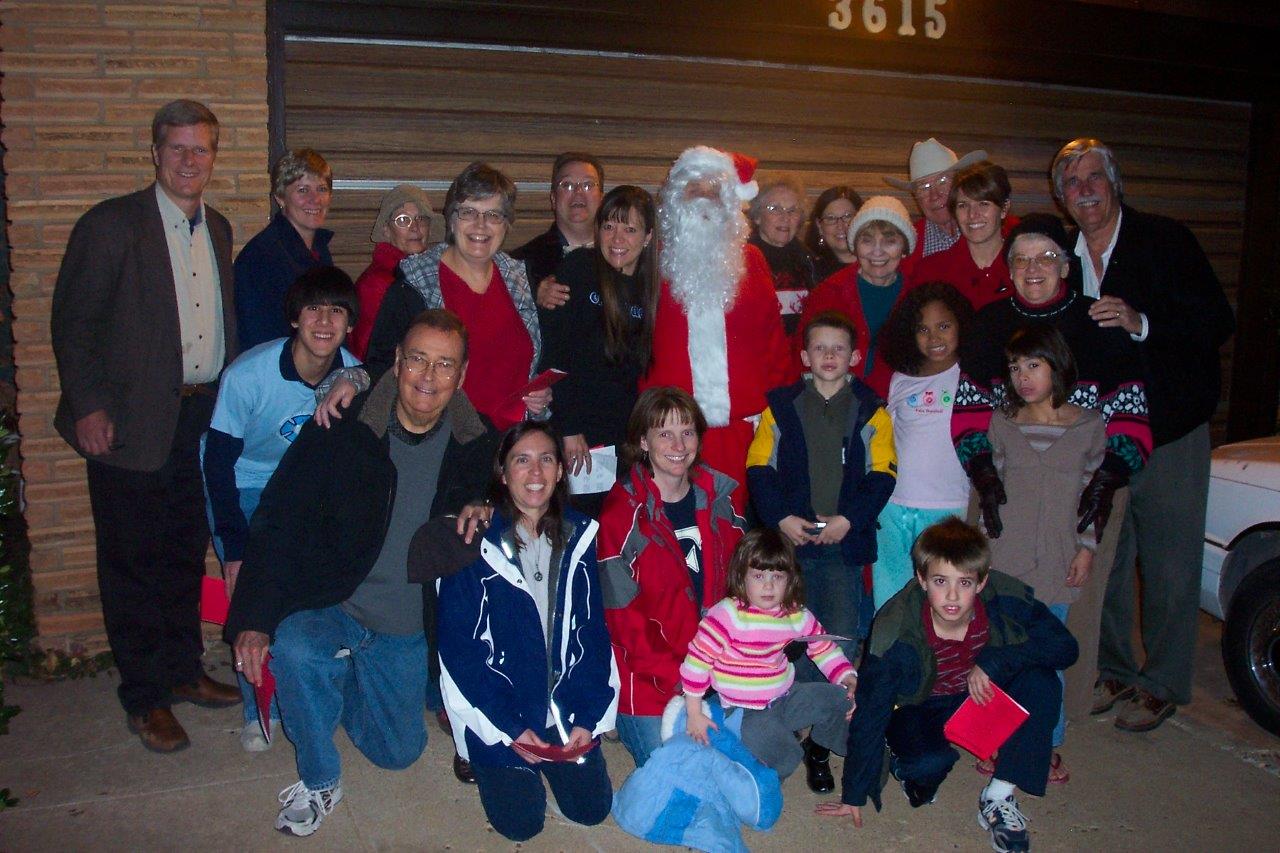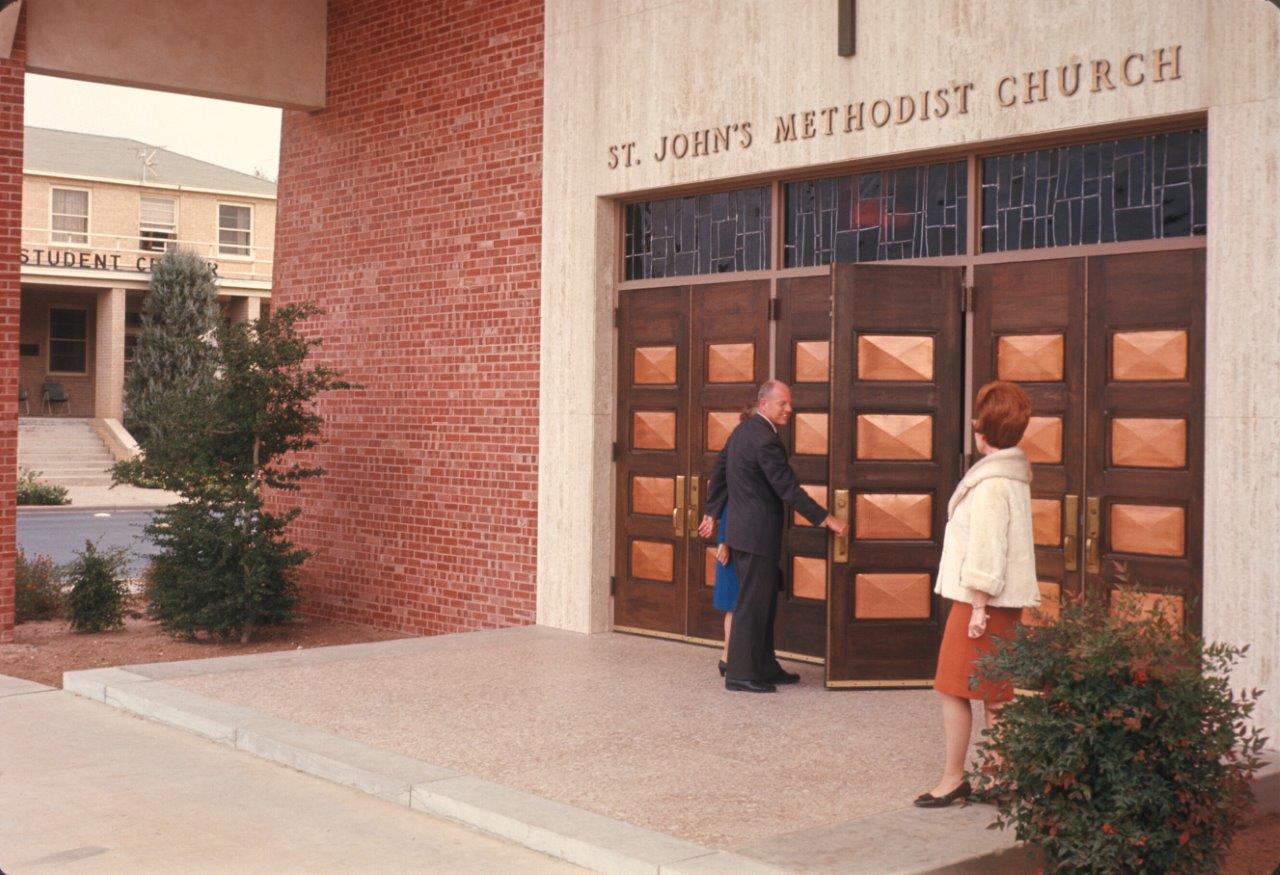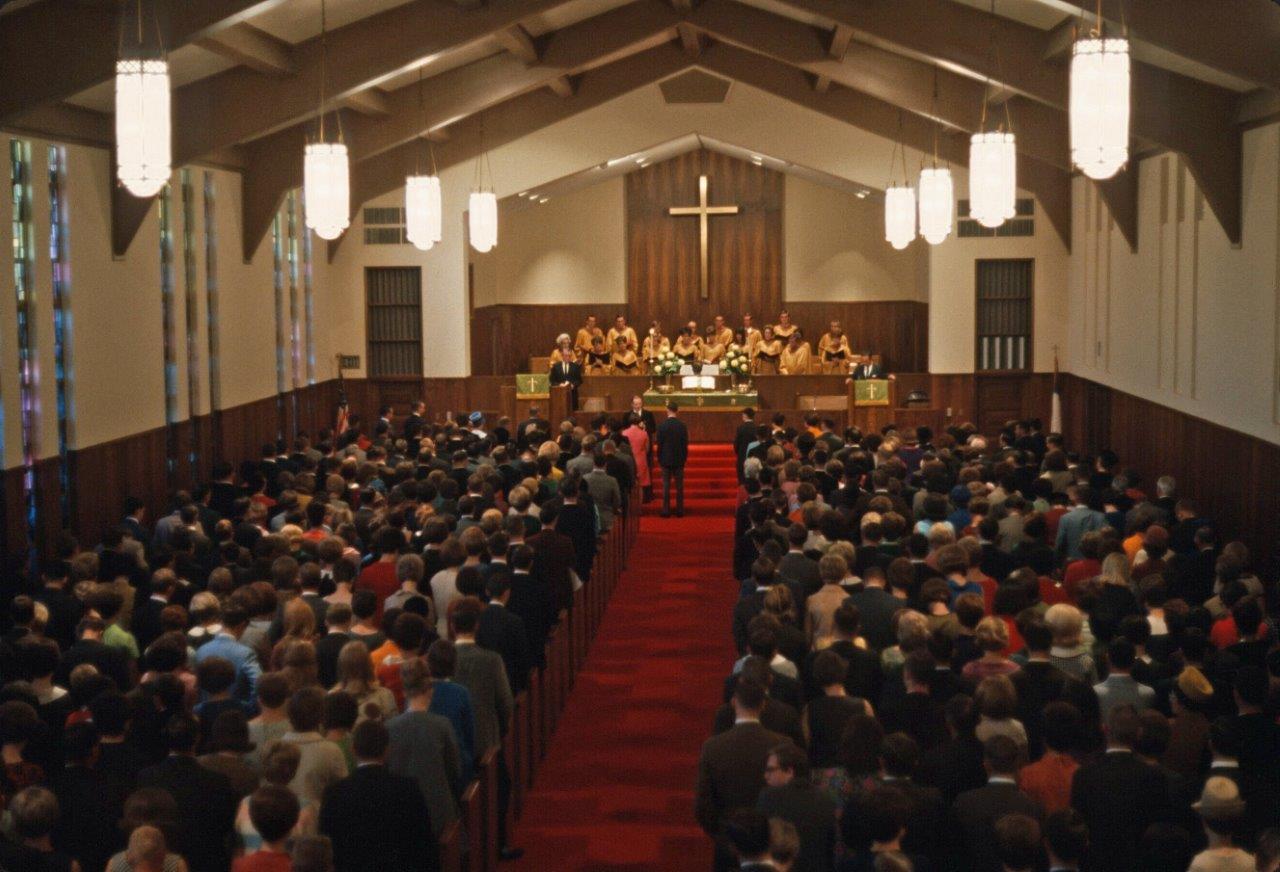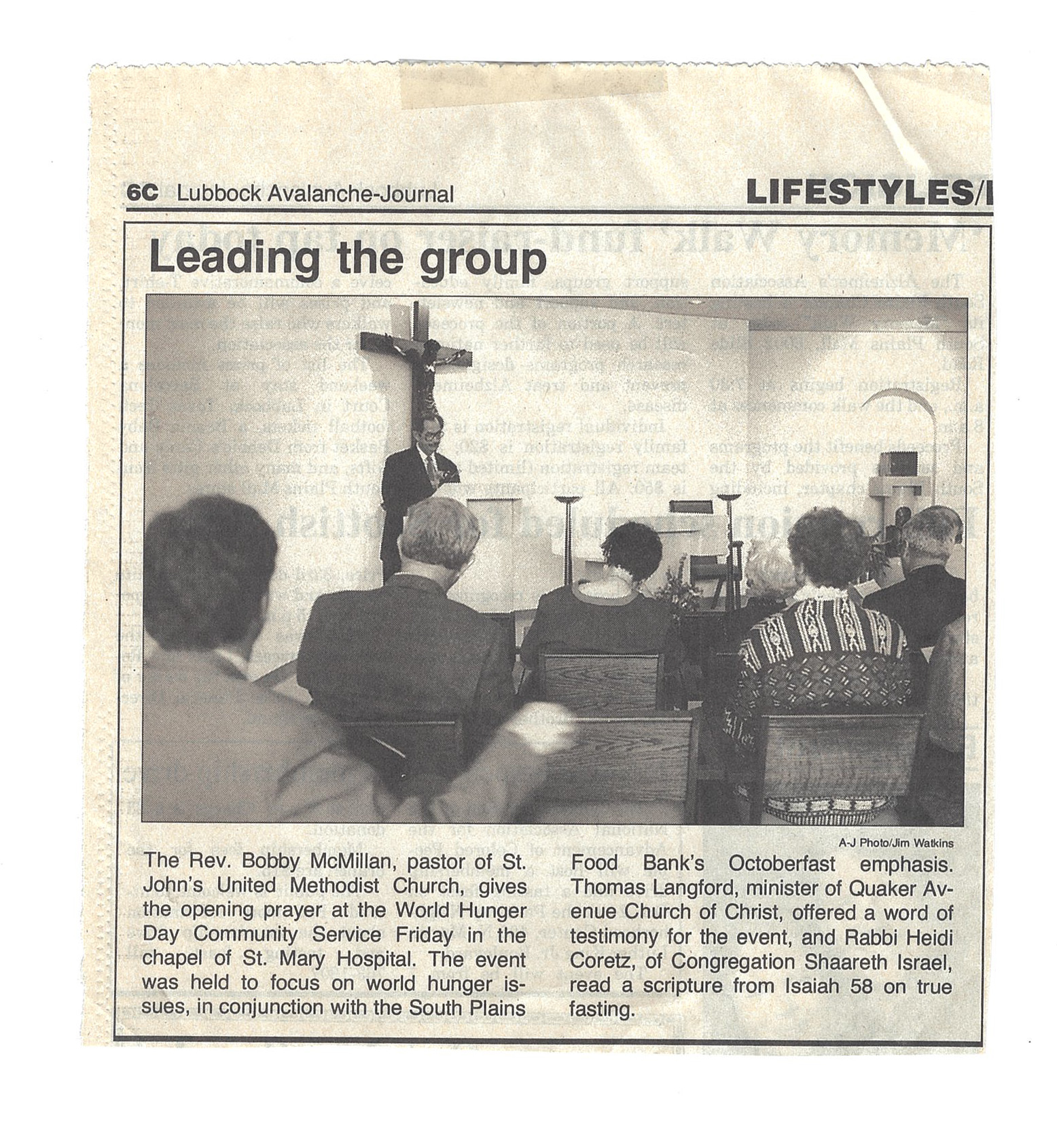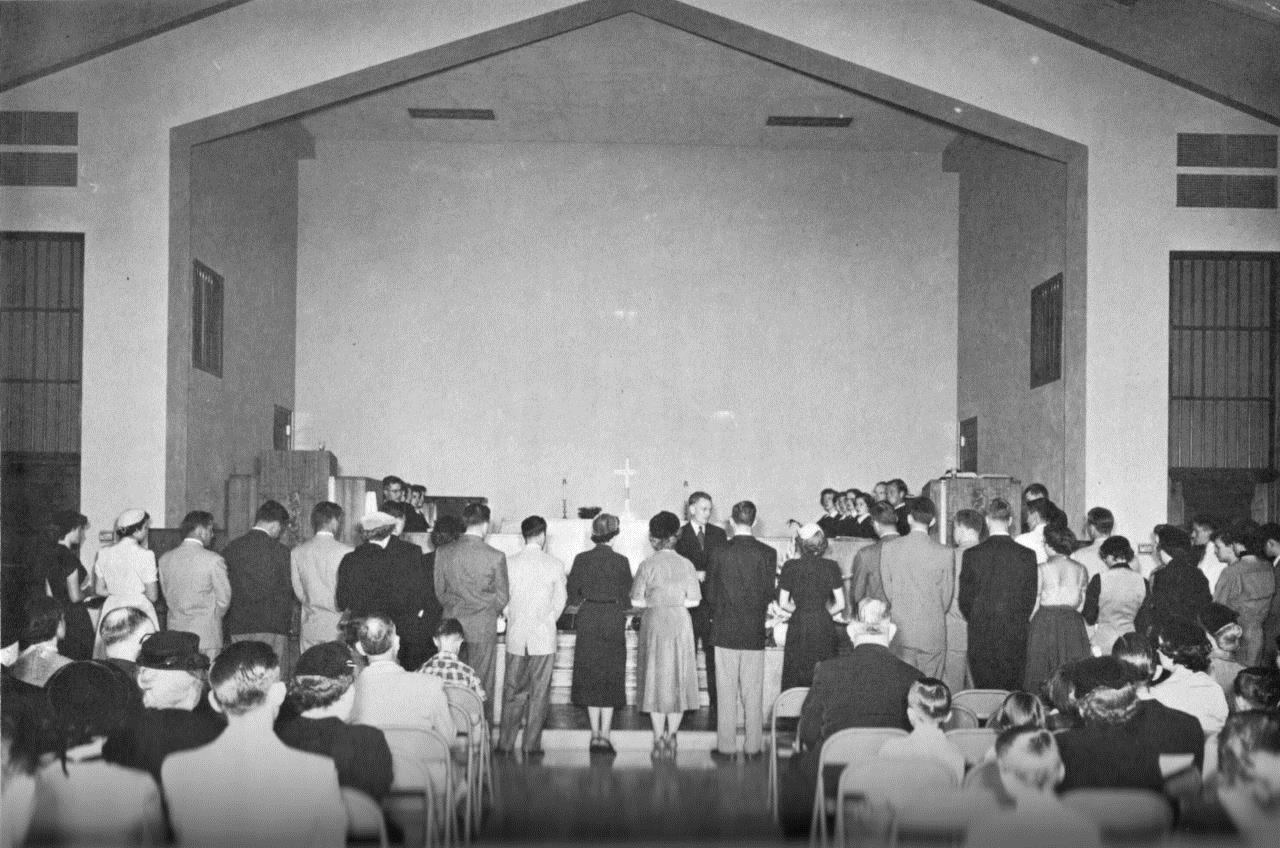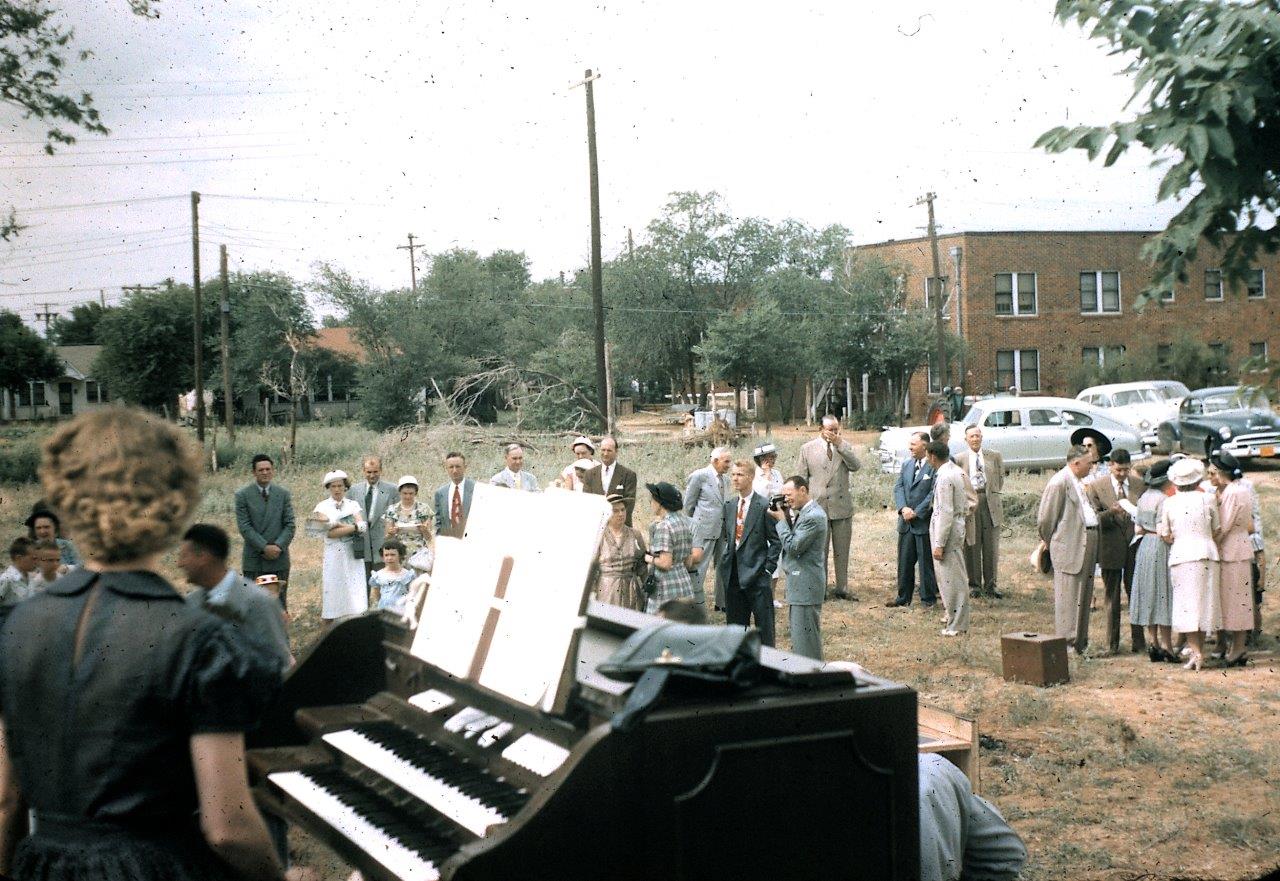A Rich History
In 2022, St. John’s received an official Texas Historical Marker. Historical markers commemorate diverse topics in Texas history, including: the history and architecture of houses, commercial and public buildings, religious congregations, and military sites; events that changed the course of local and state history; and individuals who have made lasting contributions to our state, community organizations, and businesses.
A Humble Beginning
In the Fall of 1939 the country was still fighting its way out of the Great Depression and WWII had begun in Europe. The growing City of Lubbock was celebrating its 30th anniversary and had a bustling downtown and a few big city amenities. You could enjoy a waffle at McGuire’s for 20 cents, buy a Ford pickup for $450 and have your shirts laundered for 8 cents.
The fourteen-year-old Texas Technological College, boasted a record enrollment of 3,896. Texas Tech students, faculty and staff were almost fifteen percent of the Lubbock population of 31,853. The need for a church to serve Texas Tech’s Methodist faculty and students was widely discussed.
St. John’s history began that year with the Annual Conference, when Bishop Ivan Lee Holt announced that a new Methodist Church would be established near campus. The new church would be located at 26th Street and College Avenue, one mile south of the college dormitories, and “far off the beaten path.” Several Methodist faculty members felt that was not a suitable location for a college church for students, most of whom relied on their feet and the occasional free ride from Lubbock citizens for their transportation.
Those faculty members, encouraged by Mrs. Paul W. Horn, widow of the first Texas Tech President and a devoted Methodist, drew up a petition asking the Bishop to consider a site closer to campus. They cited numerous reasons for their objection to the stated location, including the fact that 26th and College was “away from town” and too close to Asbury Methodist, located at 20th Street and Avenue T. They also discussed the need for other student services, such as a Methodist Student Center and a Methodist Bible Chair, and argued that a church near those facilities would be logical for a well-rounded, efficient program for Methodist students. Such a location would also appeal to business and professional people in the surrounding neighborhoods.
What happened next is best presented in Louise Crawford Allen’s account, written in 1965: “Representatives of the group made an appointment with the District Superintendent [Dr. O.P. Clark] to apprise him of their plan and show him a copy of the petition. Dr. Clark, visibly shaken at this unorthodox approach to church procedure, is said to have exclaimed, ‘My God! Don’t send this to the Bishop!’ Apparently, however, he was soon convinced that their action grew out of sincere concern rather than impertinence and he approved it.” The Bishop was convinced as well, and the fledgling church was named St. John’s, perhaps in honor of Bishop Holt’s home church in St. Louis, Missouri.
Preston Smith, who would become a charter member of the new church, was approached about lending the Tech Theater at College Avenue and 13th Street for services until a building could be built. The Rev. R. Luther Kirk was appointed to “the church that was not,” and the first service was held at the theater on December 10, 1939. About 65 people attended the service. “A much used motion picture theater, on a wintry Sunday morning, was hardly an impressive sanctuary. The scent of Saturday night’s popcorn lingered, and the lighting achieved by opening doors, tying back curtains, and turning up the dim house lights was hardly adequate… The congregation sang using hymnals borrowed from First Methodist Church. The young pastor, a monument of faith, was nervous if not frightened by the task that lay ahead…An improvised podium (built by the pastor at a cost of 75 cents) was the pulpit. It was somewhat overshadowed by the enormous silver screen in the background. Yet the realization of common purpose and challenge unified the little group gathered in that theater…They sensed—and believed in—the future destiny of this religious venture.”
A New Church Created
In January 1940 Stewards and Trustees set about the business of organizing and financing the new church. St. John’s continued to meet in the Tech Theater or occasionally in Seaman Hall, the Episcopal student center. Construction began on a building in June, when the church took out a loan for $6,000. With contributions and additional financing, the final cost for the lots and building at 14th and X was $8,914.
W.L. Bradshaw, Professor of Architecture who had also designed Lubbock High School, designed the new church and supervised its construction. The Spanish style stucco building with red tiled roof, seated 250 in the main auditorium and included Sunday School rooms that could be opened into the sanctuary for additional seating. Rich amber stained windows filtered the sunlight and cast a warm golden light over the chapel.
And, over the pastor and District Superintendent’s objections, there was a cross at the peak of the gable over the door. Chairman of the Board of Stewards and Texas Tech English Department Chair, Dr. Byron Gates, quoted the “Encyclopedia Britannica, the life of Wesley, the church discipline, the history of Methodism, the creed, and emphasis on the cross ‘in most of our songs’” to wear down objections. The lovely copper Celtic cross now hangs outside the church office door, one of the few physical reminders of the history of St. John’s.
The first services in the new building were held September 15, as “the congregation moved with great enthusiasm into the beautiful new sanctuary.” Pastor Kirk wrote Dr. Gates, that St. John’s began the year of 1940 without property or membership and closed the year with a new building, a membership of 200 and a well-organized church.
Throughout World War II and the post-war years, St. John’s experienced tremendous growth and was in a constant crisis of inadequate facilities. When church membership surpassed 1,000 at the church designed for 250, a visitor asked an usher how early he would have to arrive to sit where he could see the preacher; he said he had sat in the kitchen or hall every time he had been there. Even with several additions to the original building it was soon apparent that a larger facility would be necessary. Planning for a new, larger church began as early as 1944, when lots were purchased facing College Avenue at 15th Street.
Groundbreaking for the first phase of a new building was held on Sunday, July 15, 1951. Several ministers participated in the ceremony, while music was provided by the church organist playing from a flatbed truck. James G. Allen, chair of the Building Committee, turned the first spade of dirt along with the presiding ministers, followed by other church officers “and then all who care to participate.”
The first service in the new building was on September 2, 1952, held on folding chairs in the Fellowship Hall since the Sanctuary was not included in the initial building phase. As the congregation expanded, the physical presence of St. John’s was enlarged:
- Sunday School Rooms
- a Sanctuary enlarged multiple times
- Choir Basement
- Green space enclosed as the Garden Room
- culminating in a major renovation of the Sanctuary in 1991.
As usual, these activities were not without some controversy.
Throughout St. John’s history, music was an important part of worship for all ages. The music program began with rented piano and borrowed soloists. Dr. and Mrs. Sam Dunn donated an organ that had been in the original Lindsey Theater which was refurbished and dedicated in 1946. Choirs and Chorister’s Guild were available for children and youth. Chimes and handbells introduced children to active participation in worship. Generous members established scholarships for Texas Tech music students to be part of the St. John’s Choir. An amazing Holtkamp tracker organ with 2,357 pipes was installed in 1991.
From the beginning St. John’s has been a congregation with a tremendous sense of civic responsibility and deep concern for those in need in Lubbock and the world. In its 75 years the church, through organized outreach efforts, groups such as United Methodist Women and United Methodist Men, youth groups, and the dedication of individual members with passion for a cause has helped countless individuals and groups. Virtually every Sunday School class and every church group has helped numerous community organizations. Wherever St. John’s members have seen a need they have been there ready to help.
Marching Forward
From the beginning, St. John’s has worked to feed the hungry. In the early years the church assisted with various community efforts, and Sunday School classes adopted families in need. In the 1970s the church began stocking a year round food pantry which soon served about 20 families a week. Today, the St. John’s/St. Paul’s Benevolence program provides food vouchers and hygiene products to as many as 100 families weekly.
St. John’s members and groups have also promoted an interest and involvement in the arts. The church has always been used for musical concerts and recitals and in 1984 St. John’s held a 3 day Celebration of the Arts. Through the Three Thursday Evenings programs and the Arts and Lectures Series, the church has offered the Lubbock community the opportunity to hear renowned theologians, musicians, and lecturers.
St. John’s slogan of “Open Hearts, Open Arms and Open Minds” has always extended to other community organizations. Boy Scout Troop 406, the Legal Clinic, the League of Women Voters, South Plains Shared Homes, Literacy Lubbock and Parents and Friends of Gays and Lesbians and many other organizations have enjoyed St. John’s facilities.
Through the years St. John’s has been faced with challenges. In the early years it was organizing, financing and providing facilities for a growing church membership. In the 1960s and 1970s, following a nationwide trend, the church was faced with issues of membership decline, financial stress, and denominational defection. In addition, larger events such as the Vietnam War sometimes caused controversy not only in the community but also within the church. In the 1990s, St. John’s prayerfully and thoughtfully embarked on the journey to becoming a Reconciling congregation. The final Statement of Reconciliation adopted by the church in 1998 affirms that “we are one in Christ and celebrate our diversity and recognize the sacred worth and dignity of all persons.”
St. John’s stepped forward to confront these challenges with a spiritual and social conscience and opened its hearts, arms and doors even wider.
One early church member noted that St. John’s was a “maverick” church and we may have contributed a few gray hairs to some District Superintendents over the years. But the people of St. John’s have always been imbued with what has been called “a loving energy” and continue to adhere to the mission stated in 1983 to “ask the difficult questions and commit to searching for and being a part of the answers in seeking a deeper faith through obedience to Christ.” There will be more challenges, more needs to be met, and new avenues of suffering and happiness. As Mary Jane Hurst noted in the 50th anniversary history of St. John’s,
“The great challenge for the future will be to follow that way and to continue responding with love and energy to whatever lies ahead.”
Need Help?
If you have questions or if you need assistance, please contact the church office at (806)762-0123.

